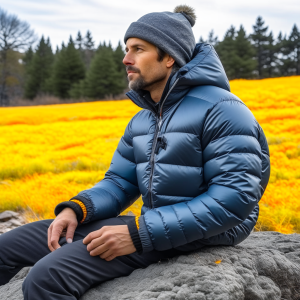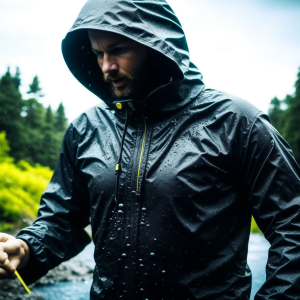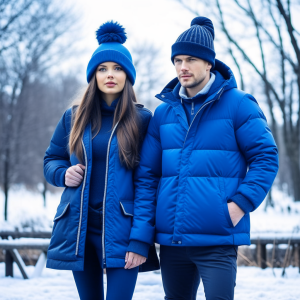Maximize Your Winter Comfort and Style with Layered Cold Weather Clothing Strategies
As winter envelops us in its frigid embrace, the pursuit of warmth combined with stylish attire takes center stage. The sharp drop in temperatures compels us to adopt layering techniques, but have you ever considered the underlying principles that dictate effective layering? In this article, we will explore the fundamentals of cold-weather clothing layering, revealing the essential strategies that differentiate high-performing garments in the fight against the cold, ensuring you remain both comfortable and fashionable throughout the chilly months.
Layering your clothing goes beyond mere aesthetics; it represents a strategic method for heat retention and comfort in severe weather conditions. When temperatures fall, our bodies automatically attempt to conserve heat by constricting blood vessels, which can lead to discomfort in extremities like hands and feet. Unfortunately, this natural defense mechanism often falls short. This is where the art and science of layering comes into play, enabling us to create an effective barrier against the cold while preserving our mobility and overall comfort.

Establishing Your Base Layer: The Essential Starting Point for Winter Warmth
The base layer is the cornerstone of your winter wardrobe, designed to fit snugly against your skin while providing crucial insulation. To fully appreciate the significance of this layer, we must delve into the science of moisture management and how it profoundly influences your warmth and comfort during the colder months ahead. Understanding this aspect is critical as it directly affects your body’s ability to maintain optimal temperature levels.
Utilizing Moisture-Wicking Fabrics for Superior Comfort
Choosing the right material for your base layer is vital for effective moisture management. The significance of moisture-wicking properties cannot be overstated. These advanced fabrics are engineered to draw moisture away from your skin—be it perspiration or external moisture—preventing accumulation that can lead to discomfort. A high-quality base layer not only serves as a barrier against moisture but also ensures you remain dry and snug, even in adverse weather conditions, greatly enhancing your overall warmth and comfort.
Evaluating Insulation: The Benefits of Merino Wool and Synthetic Materials
Let’s now investigate how materials such as merino wool and synthetic fibers enhance the insulating power of your base layer. Merino wool is highly regarded for its natural warmth and breathability, making it an outstanding choice for insulation—it retains heat while effectively managing moisture. On the other hand, synthetic materials like polyester and nylon offer an excellent balance of durability and insulation, creating a warm microclimate next to your skin that efficiently holds body heat, keeping you cozy even in the harshest environments.
Achieving the Ideal Fit: Essential Tips for Base Layer Performance
Finding the right fit for your base layer isn’t just about choosing your usual size; it’s about optimizing its effectiveness. A snug-fitting base layer maintains constant contact with your skin, which enhances both its insulating and moisture-wicking functions. However, it’s crucial to strike the right balance—too tight can hinder movement and comfort, while too loose may compromise performance. When determining fit, consider the type of activity and your overall layering system to ensure seamless compatibility with your other cold-weather garments.
Ultimately, the base layer transcends traditional clothing; it functions as a sophisticated moisture-wicking and insulating barrier against the harshness of winter. By grasping the unique characteristics of materials like merino wool and synthetic fibers, along with mastering the nuances of fit, you can elevate your base layer from a simple garment to an indispensable component of your defense against the cold.
Optimizing the Insulating Layer: Your Essential Tool for Heat Retention
 As we transition to the insulating layer, we highlight its critical role in capturing and retaining heat around your body. This layer is indispensable in the art of heat retention, acting as a protective cocoon against the harsh elements of winter. We will explore key factors such as warmth-to-weight ratios, the merits of down insulation, and the eco-friendly advantages of synthetic alternatives.
As we transition to the insulating layer, we highlight its critical role in capturing and retaining heat around your body. This layer is indispensable in the art of heat retention, acting as a protective cocoon against the harsh elements of winter. We will explore key factors such as warmth-to-weight ratios, the merits of down insulation, and the eco-friendly advantages of synthetic alternatives.
Understanding Warmth-to-Weight Ratios for Superior Insulation
Comprehending warmth-to-weight ratios is crucial when selecting an insulating layer. This principle emphasizes that insulation materials should deliver excellent warmth without adding unnecessary bulk. Essentially, it’s about maximizing heat retention while minimizing weight, allowing for free and comfortable movement. This balance is particularly important for individuals who desire insulation without feeling encumbered, enabling unrestricted activity in cold environments.
Down Insulation: Lightweight Warmth for Outdoor Enthusiasts
Down insulation is a premier choice for those seeking unparalleled warmth in a remarkably lightweight form. Sourced from the soft under-feathers of ducks and geese, down is celebrated for its outstanding warmth-to-weight ratio. Its lightweight and compressible properties make it a favored option for winter adventurers who need effective insulation without sacrificing agility. Recognizing the advantages of down insulation is vital to understanding its role in crafting an insulating layer that seamlessly integrates warmth, comfort, and flexibility.
Choosing Synthetic Insulation: Ethical Warmth for Varied Conditions
Synthetic insulation, primarily composed of polyester fibers, has become a favored ethical alternative in the insulation landscape. What sets synthetic insulation apart is its ability to retain warmth even in damp conditions, a scenario where down may falter. This reliability in unpredictable weather makes synthetic fabrics ideal for various climates. Furthermore, selecting synthetic options aligns with ethical considerations, enabling you to enjoy warmth without compromising your values.
Determining the Optimal Thickness: Precision in Insulation Choices
Deciding on the right thickness for your insulating layer requires thoughtful consideration; precision is key. Evaluate the expected level of cold exposure alongside your overall layering approach when determining thickness. In milder climates, a thinner insulating layer may suffice, while harsher conditions may demand a thicker, more robust choice. Understanding the intricacies of insulation thickness allows you to tailor your insulating layer to meet the specific requirements of your winter activities.
In summary, the insulating layer evolves beyond traditional clothing roles, becoming a calculated ally in the battle against the cold. By decoding the complexities of warmth-to-weight ratios, highlighting the advantages of down insulation alongside synthetic alternatives, and providing guidance on thickness selection, we transform the insulating layer into a strategic defense mechanism against winter’s chill.
Your Outermost Layer: The Ultimate Guard Against Harsh Winter Elements
The outermost layer serves as your vital shield against cutting winds and frigid temperatures. This layer fulfills dual roles: it protects against environmental threats and plays a significant part in moisture management. As we explore the outer layer further, we’ll uncover the importance of breathability, the transformative advantages of DWR finishes and Gore-Tex membranes, and the essential windproof features that enhance insulation efficiency.
Breathability: The Foundation of Comfort and Moisture Control
Often overlooked, breathability is a crucial attribute of the outer layer that greatly influences overall comfort. This feature refers to the fabric’s capacity to allow sweat vapor to escape from your body while simultaneously preventing external moisture from infiltrating. Achieving this balance keeps you dry and comfortable, thereby alleviating the chilling effects of trapped moisture. A breathable outer layer is essential for maintaining a cozy microclimate within your clothing, ensuring optimal comfort during adverse weather.
DWR Finishes and Gore-Tex: The Gold Standard in Waterproofing Technology
 DWR (Durable Water Repellent) coatings and Gore-Tex membranes are leaders in the field of cold-weather outerwear. DWR finishes impart water-repellent qualities to fabrics, forming an effective barrier against rain, sleet, and snow. Gore-Tex and similar technologies elevate waterproofing capabilities by providing an ideal blend of impermeability and breathability. Understanding the synergy between these technologies is essential for ensuring you remain dry and comfortable, even in the harshest weather conditions.
DWR (Durable Water Repellent) coatings and Gore-Tex membranes are leaders in the field of cold-weather outerwear. DWR finishes impart water-repellent qualities to fabrics, forming an effective barrier against rain, sleet, and snow. Gore-Tex and similar technologies elevate waterproofing capabilities by providing an ideal blend of impermeability and breathability. Understanding the synergy between these technologies is essential for ensuring you remain dry and comfortable, even in the harshest weather conditions.
Windproof Features: Boosting Your Protection Against Cold Breezes
Windproof characteristics are vital in freezing conditions, particularly when biting gusts can penetrate even the toughest fabrics. The windproof outer layer acts as an impenetrable barrier against cold air, enhancing comfort while protecting the insulation of the inner layers. By effectively blocking chilly winds, your outer layer becomes a formidable defender, ensuring that your meticulously chosen layers work harmoniously to keep you warm and shielded from the elements.
In essence, the outermost layer is much more than just a protective shell; it is an advanced barrier that expertly balances breathability and waterproofing. By understanding the significance of breathability, exploring the innovations of DWR finishes and Gore-Tex membranes, and recognizing the essential role of windproof features, we elevate the outer layer into a versatile garment that excels in both style and functionality while resisting the harshest weather.
Effective Strategies for Achieving Ultimate Warmth and Style This Winter
With a solid understanding of effective layering firmly established, let’s explore actionable strategies and tips to enhance your cold-weather experience, effortlessly merging warmth with lasting style. Accessories are pivotal to winter attire, often serving as unsung heroes that can elevate your wardrobe. From the essential warmth provided by well-selected gloves to the chic flair of a cozy hat, and the comfort offered by thermal socks, these seemingly minor details are crucial for achieving a fashionable and comfortable winter ensemble.
The Crucial Role of Accessories: More Than Just Aesthetic Appeal
Accessories extend beyond mere decoration; they are fundamental elements of your defense against the cold. Beyond their visual allure, items like gloves, hats, and thermal socks serve critical functions in enhancing your overall warmth. By thoughtfully integrating these accessories into your ensemble, you can ensure that every part of your body is shielded from the chill, effectively preventing valuable body heat from escaping into the icy air.
Investing in Quality Accessories: Recommendations for Ultimate Warmth
The quest for warmth goes beyond your base and insulating layers; it also involves the careful selection of accessories. Invest in high-quality gloves made from insulating materials such as fleece or lined leather to create a robust defense against the cold. A warm hat with additional insulation or a cozy faux-fur lining not only looks stylish but also contributes to heat retention. Opt for thermal socks crafted from merino wool or advanced synthetic blends to ensure maximum warmth and effective moisture management.
Fashion-Forward Strategies: Blending Functionality with Style
Staying warm during freezing temperatures doesn’t mean sacrificing style. Utilize these clever styling techniques to traverse the winter landscape with elegance. Experiment with layering various textures in your outfit to create visual intrigue while simultaneously enhancing insulation. Choose winter-appropriate colors that complement the snowy backdrop, and don’t shy away from accessorizing with standout pieces like a vibrant scarf or trendy earmuffs to elevate your overall appearance.
Ultimately, accessories serve as the understated architects of a well-rounded winter outfit. They not only enhance warmth but also empower you to express your personal style even in the coldest conditions. By selecting premium accessories and infusing your winter wardrobe with thoughtful styling, you can master the chill while showcasing undeniable elegance.
Embrace the Harmony of Style and Functionality in Your Winter Wardrobe
As we conclude our exploration of conquering winter’s chill, it’s vital to acknowledge the significance of style in cold-weather apparel. Dressing for the cold doesn’t necessitate sacrificing your fashion sense; instead, today’s fashion landscape champions the integration of functionality and flair. Numerous outdoor and fashion brands have recognized and embraced the demand for winter clothing that not only keeps you warm but also radiates confidence and contemporary elegance.
The Evolution of Cold-Weather Clothing: A Stylish New Era
 The cold-weather clothing industry is experiencing a renaissance, where winter gear transcends basic functionality to become a hallmark of innovation and style. Designers and brands are increasingly recognizing the necessity for apparel that harmoniously blends practicality with aesthetic appeal. This transformation has ushered in a new era of outerwear that not only provides warmth but also captivates with its striking visual design.
The cold-weather clothing industry is experiencing a renaissance, where winter gear transcends basic functionality to become a hallmark of innovation and style. Designers and brands are increasingly recognizing the necessity for apparel that harmoniously blends practicality with aesthetic appeal. This transformation has ushered in a new era of outerwear that not only provides warmth but also captivates with its striking visual design.
Pioneering Brands: Fusing Style with Functionality
Several brands are leading this style movement, skillfully merging fashion and functionality in their winter apparel. Canada Goose is renowned for its luxurious down jackets that deliver impressive warmth without compromising on style. The North Face integrates state-of-the-art technology into its designs, creating outerwear that balances chic aesthetics with practical performance. Meanwhile, Moncler has redefined the puffer jacket, transforming it into a high-fashion statement piece, demonstrating that winter attire can be both functional and runway-worthy.
Effective Styling: Elevate Your Winter Fashion Approach
Now, let’s explore how to effectively merge warmth and style in your winter outfits. Select standout pieces that fulfill both functional and aesthetic roles, such as a beautifully tailored wool coat or a sleek parka that acts as the focal point of your ensemble. Experiment with layering a chunky knit sweater over a fitted jacket for a cozy yet stylish look. Don’t hesitate to introduce vibrant colors into your winter wardrobe by accessorizing with eye-catching scarves or trendy boots.
Ultimately, embracing style in cold weather is no longer a contradiction; it’s a vibrant reality shaped by a dynamic fashion industry. As fashionable cold-weather gear emerges, adorned by innovative brands, the narrative shifts from mere survival to personal expression. So, immerse yourself in this style renaissance, choose pieces that empower you, and push the boundaries of fashion amid the wintry embrace of the season.
The post Cold Weather Clothing Layers: The Science Explained appeared first on Survival Bite.
The Article Cold Weather Clothing Layers Explained: Understanding the Science Was Found On https://limitsofstrategy.com


I totally agree that layering is key to winter comfort, but I’ve always found that figuring out the right combinations can be a bit of a challenge. Like, I used to just throw on whatever I liked without really thinking about insulation and breathability. I remember one winter, I wore this super cute sweater as my main layer, only to find out that it didn’t really trap any heat—it was just stylish.